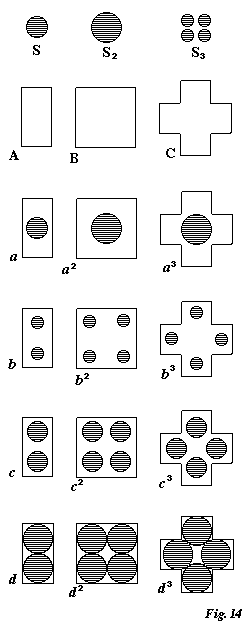CONSTRUCTION VIII. THE SHAFT 121
to carry B or C loaded, we should 
Now if we put the single shafts each under the centre of the mass they have to bear, as represented by the shaded circles at a, a2, a3, the masses A and C are both of them very ill supported, and even B insufficiently; but apply the four and the two shafts as at b, b2, b3, and they are supported satisfactorily. Let the weight on each of the masses be doubled and the shafts doubled, in area, then we shall have such arrangements as those at c, c2, c3; and if again the shafts and weight be doubled, we shall have d, d2, d3.
§ 14. Now it will at once
* I have assumed that the strength of similar shafts of equal height is as the squares of their diameters; which though not actually a correct expression, is sufficiently so for all our present purposes.
[Version 0.04: March 2008]